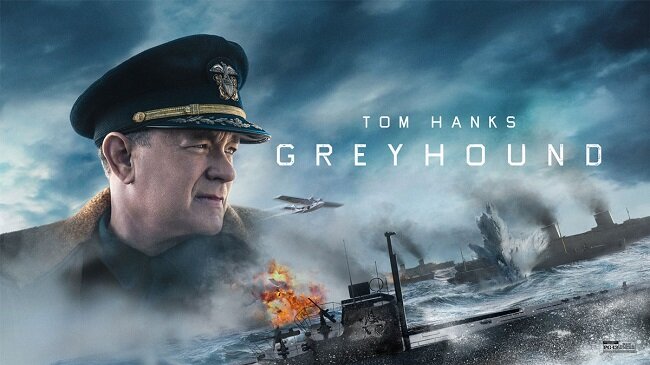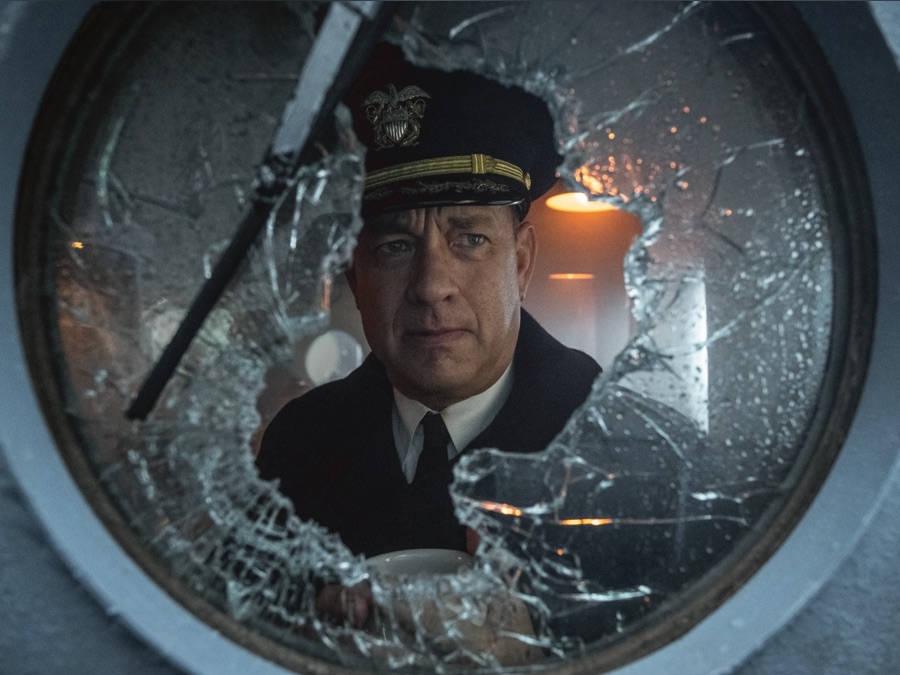”Greyhound 2020”
- movieslovers
- October 15, 2024

Suggested videos for you: [ Movie Review ] The Return of the Bald Savior, Humanity’s Last Hope || Black Adam
Suggested videos for you: [ Movie Review ] The Killer’s Game (2024): A Deadly Contract, A Race Against Time
Suggested videos for you: Movies Review- Greenland 2020
Suggested videos for you: [Movie Review] “Legacy of Fire and Heart”
“Greyhound” (2020) – Detailed Review
Overview: “Greyhound” is a 2020 American war film directed by Aaron Schneider, based on C.S. Forester’s novel The Good Shepherd. The film stars Tom Hanks, who also produced it. Set during World War II, it follows a U.S. Navy commander leading an Allied convoy across the Atlantic while under attack by German U-boats.
Plot Summary: The story centers on Captain Ernest Krause (Tom Hanks), who is given command of a destroyer named USS Greyhound. His mission is to protect a convoy of Allied ships crossing the treacherous North Atlantic, where they face the constant threat of German submarines. The film captures the intense tension of naval warfare as Krause and his crew navigate the dangers of the sea, including relentless attacks from the U-boats.
Character Development: Tom Hanks delivers a powerful performance as Captain Krause. His portrayal captures the weight of responsibility that rests on his shoulders, showing both his determination and vulnerability. Throughout the film, Krause grapples with self-doubt and the harsh realities of leadership in wartime, making him a relatable and compelling character.
The supporting cast, including Stephen Graham as Executive Officer Charlie Cole, adds depth to the narrative. Their camaraderie and interactions reflect the bond among the crew, showcasing their bravery and resilience in the face of adversity.
Cinematography and Visuals: The cinematography, helmed by Shelly Johnson, effectively conveys the claustrophobic and perilous atmosphere of naval warfare. The visual effects used to depict the ocean and the U-boat attacks are striking, immersing the audience in the relentless tension of the sea. The film’s production design captures the era’s authenticity, from the destroyer’s interior to the vastness of the Atlantic.
Direction and Pacing: Aaron Schneider’s direction maintains a brisk pace, creating a sense of urgency that aligns with the high-stakes environment of naval combat. The film’s runtime is a concise 91 minutes, allowing for a tight narrative that focuses on the action without unnecessary distractions. The decision to minimize subplots keeps the audience engaged and focused on the central conflict.
Themes: “Greyhound” explores themes of duty, sacrifice, and the burden of command. It highlights the challenges faced by military leaders in wartime, emphasizing the moral complexities of decision-making. The film also touches on camaraderie among the crew, portraying their unwavering loyalty and bravery in the face of danger.
Sound Design and Score: The sound design plays a crucial role in building tension, with the sounds of the sea, explosions, and the haunting score by composer Timo Alexandre contributing to the overall atmosphere. The score effectively underscores the emotional beats of the film, enhancing the viewer’s experience.
Conclusion: “Greyhound” is a gripping portrayal of naval warfare that emphasizes the psychological toll on those in command. With Tom Hanks delivering a stellar performance and a well-crafted narrative, the film stands as a tribute to the bravery of those who served in World War II. While it may not delve deeply into character backstories or the broader implications of the war, its focus on the immediacy of battle makes for a compelling and intense viewing experience. Overall, “Greyhound” is a must-watch for war film enthusiasts and those interested in the historical context of World War II.











